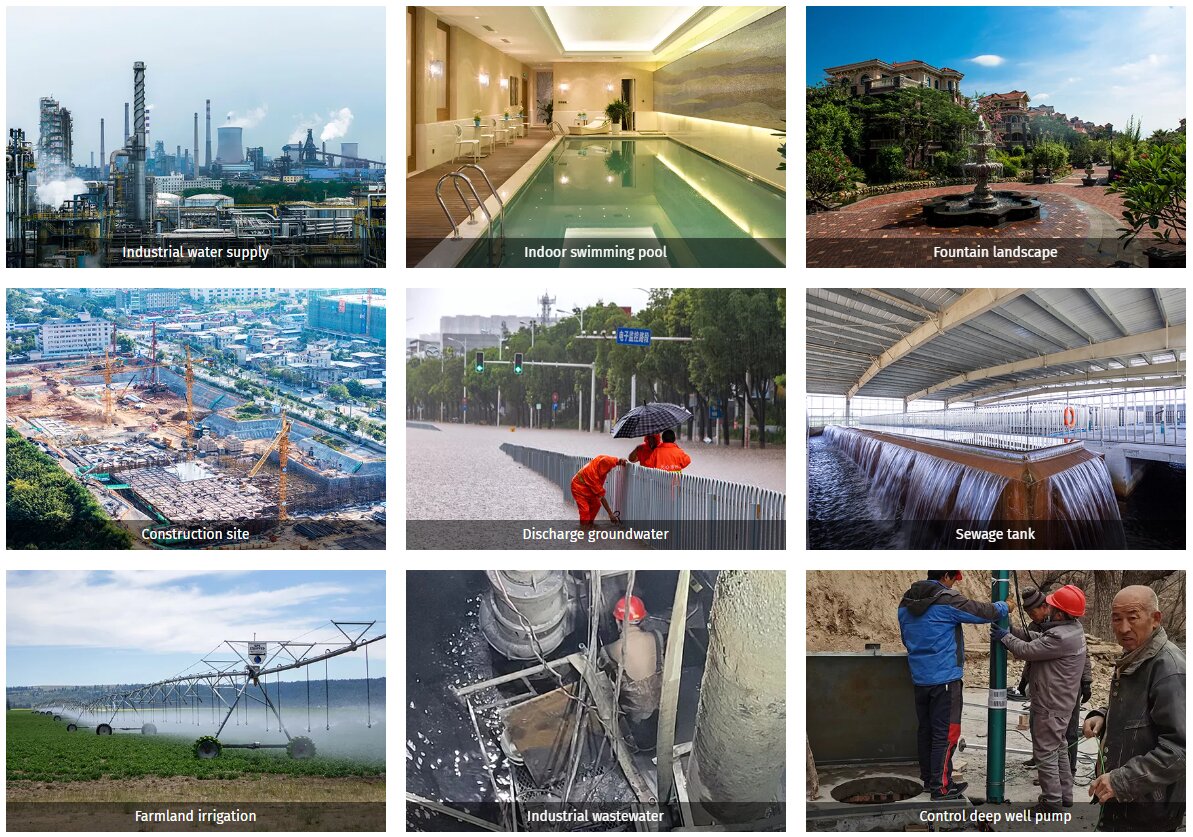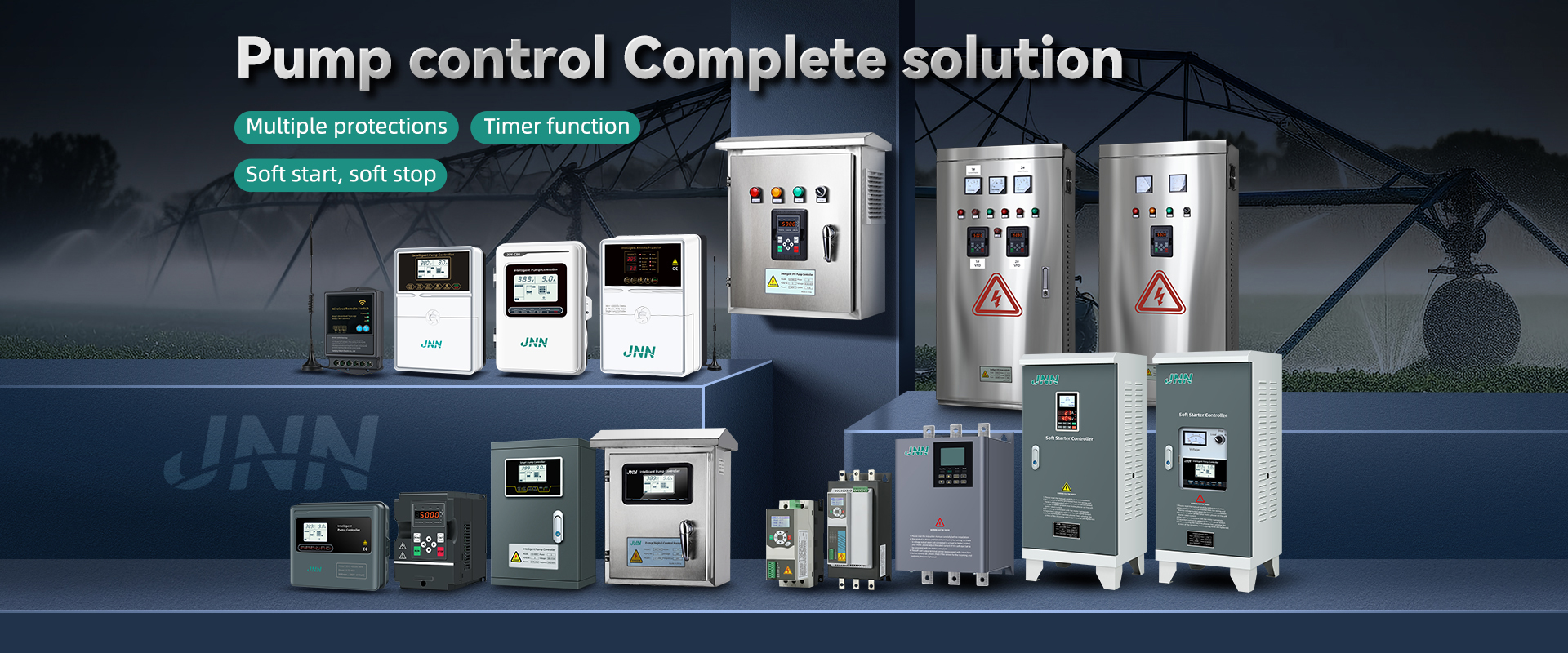
Managing water pressure effectively is crucial for households, irrigation systems, and industrial applications. An automatic water pump controller is a smart device designed to automate the operation of a water pump, ensuring consistent water flow while preventing common pump-related issues. This article explores the working principles, benefits, installation, troubleshooting, and different types of automatic water pump controllers.
Table of Contents
What is an Automatic Water Pump Controller?
How Does an Automatic Pump Controller Work?
Benefits and Limitations
Choosing the Right Automatic Pump Controller
Connecting and Installing an Automatic Pump Controller
Adjusting Water Pressure Settings
Common Issues and Troubleshooting Tips
Frequently Asked Questions
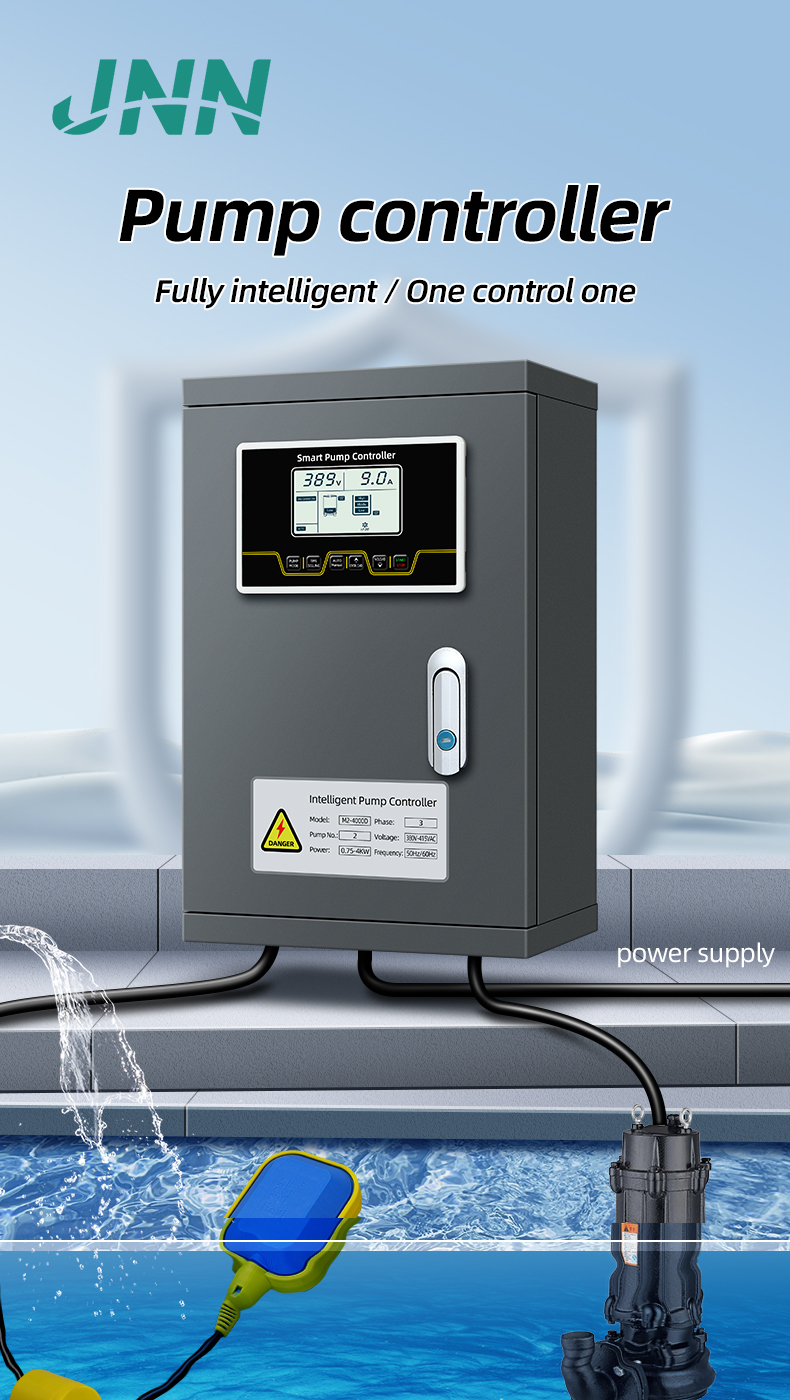
What is an Automatic Water Pump Controller?
An automatic water pump control box is an electronic device that regulates water pressure and flow. It automates the switching of a pump based on water demand, removing the need for manual operation. These controllers integrate multiple components, replacing the need for a pressure tank, switch, check valve, pressure gauge, and float switch.
Common applications include:
Domestic water supply systems
Irrigation and agricultural setups
Industrial water management
Rainwater harvesting systems
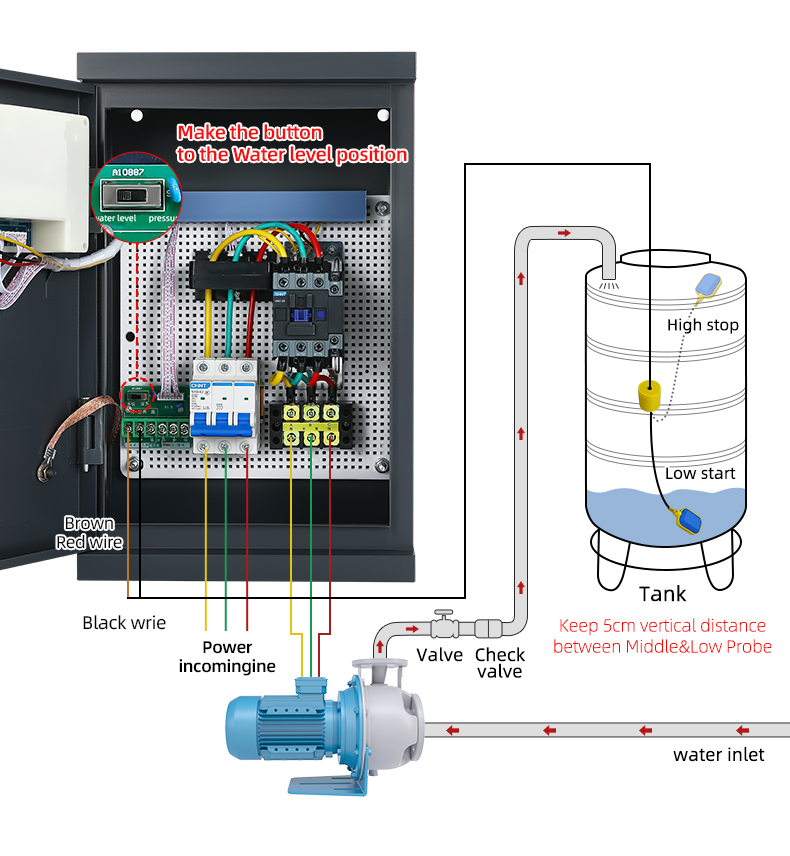
How Does an Automatic Pump Controller Work?
An automatic water well pump controller monitors water flow and pressure. When a tap or valve is opened, the controller activates the pump, and when the water supply stops, it turns the pump off.
Key components include:
Pressure Sensors: Detect changes in water pressure and trigger the pump accordingly.
Flow Switches: Monitor water movement to prevent dry running.
Electronic Control Circuitry: Ensures smooth operation with minimal electrical consumption.
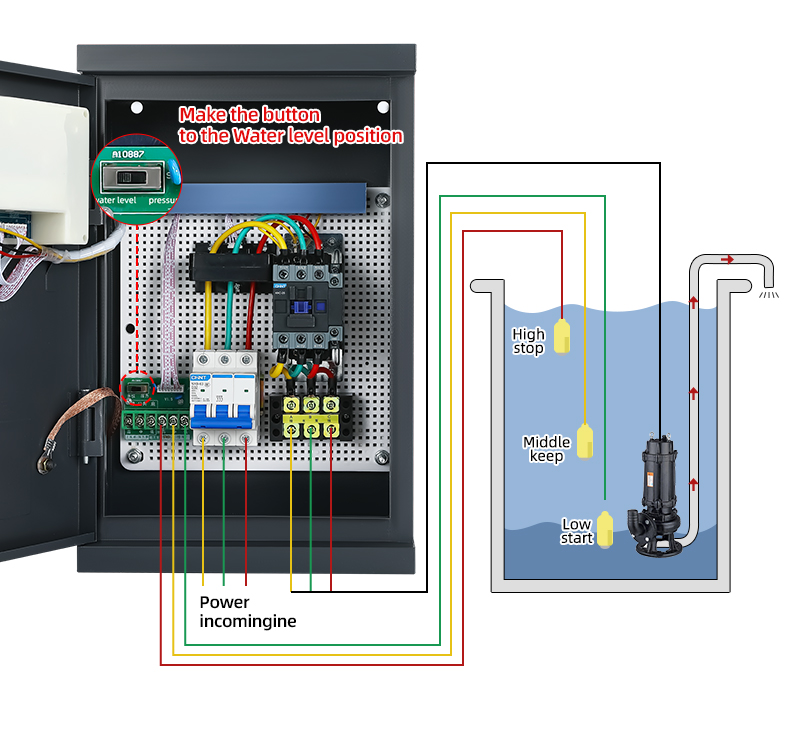
Benefits and Limitations
Benefits
✅ Energy Efficient: Reduces unnecessary pump operation, saving power.
✅ Prevents Dry Running: Protects the pump from damage caused by water shortages.
✅ Maintains Consistent Pressure: Ensures stable water supply.
✅ Reduces Wear and Tear: Minimizes pump cycling, extending its lifespan.
✅ Automation: Eliminates manual pump control, making water management more convenient.
Limitations
⚠ May Require Professional Installation: Electrical wiring can be complex.
⚠ Higher Initial Cost: More expensive than traditional manual pressure systems.
⚠ Dependent on Electrical Power: A power outage can disrupt operation.
Choosing the Right Automatic Pump Controller
When selecting an automatic pump controller, consider the following factors:
Pump Compatibility: Ensure it supports the pump's voltage and capacity.
Pressure Settings: Look for adjustable pressure ranges if customization is needed.
Water Source: Different controllers suit groundwater, rainwater, or municipal water supply.
Build Quality: Choose weather-resistant models for outdoor applications.
Safety Features: Overload protection and auto-restart functions improve reliability.
Connecting and Installing an Automatic Pump Controller
Installing an in-line automatic pump controller is relatively straightforward. These devices are designed to attach to the coupling of your water pump's outlet, either with or without an adapter, depending on your pump's model. However, handling the electrical components may require professional assistance, just like with any irrigation controller.
For those looking for a DIY-friendly solution, purchasing a pre-connected water pump with an integrated controller can simplify the process, eliminating the need for manual electrical wiring. If you're considering a standalone controller, check whether it's a 'plug and play' model or if it requires an electrician for installation.
Installation Steps:
Connect the Controller to the Pump: Attach the inlet and outlet ports securely.
Use Proper Sealing Methods: Some models require head tape or pipe dope for a secure connection, while others are pre-threaded and do not.
Secure Electrical Wiring: Ensure all electrical connections are properly installed, using an electrician if necessary.
Prime the Controller: Follow the manufacturer's manual for priming before operation.
Test the System: Once installed, open and close taps to check if the controller functions correctly.
With proper installation, your automatic water well pump control box will be up and running, ensuring efficient and automated water management.
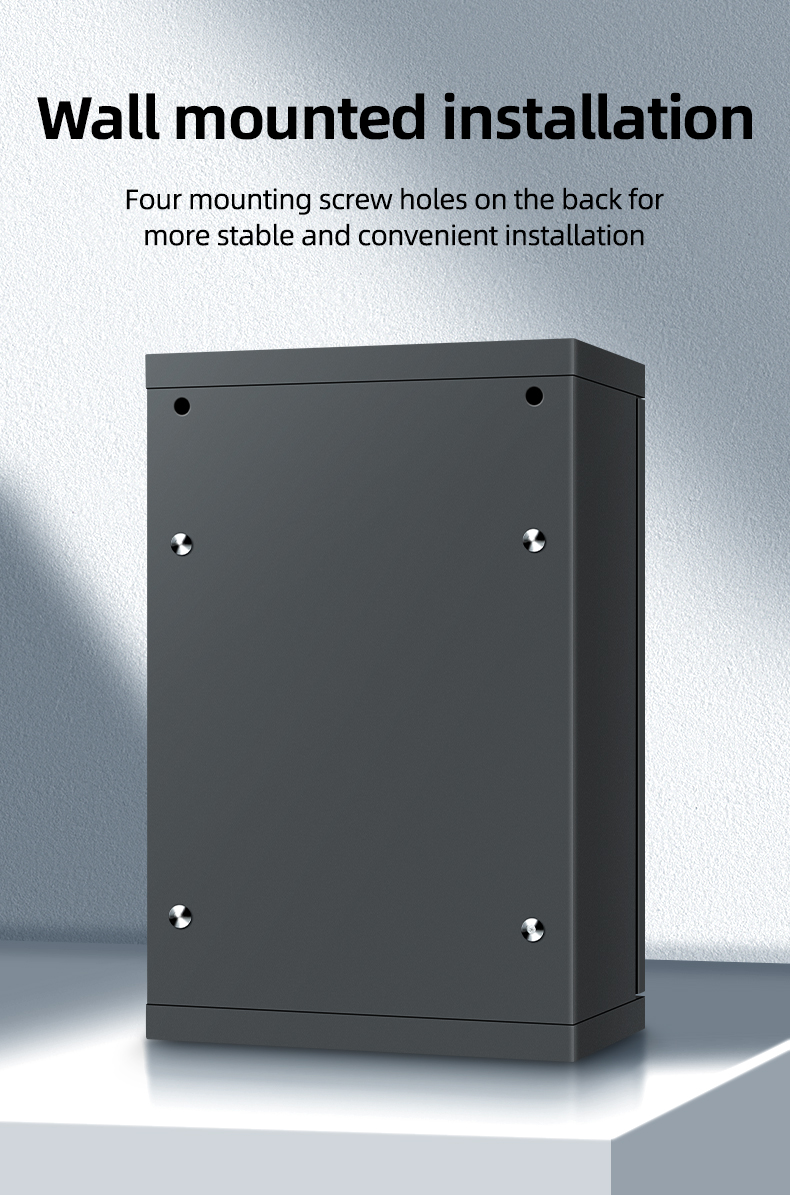
Adjusting Water Pressure Settings
Most automatic controllers come with pre-set pressure values. Some advanced models allow users to customize the pressure settings using digital controls or manual adjustment knobs.
Refer to the user manual for specific adjustment procedures.
Common Issues and Troubleshooting Tips
| Issue | Possible Cause | Solution |
| Pump does not start | Power issue, faulty wiring | Check power supply and connections |
| Pump runs continuously | Leak in the system, faulty pressure sensor | Inspect pipes for leaks, reset controller |
| Pump cycles too frequently | Pressure fluctuations, improper installation | Adjust pressure settings, check for leaks |
| No water flow | Dry-run protection activated | Ensure water supply is available |
| Controller display malfunction | Electrical issue | Restart the system, check for water damage |
Frequently Asked Questions
Q: What’s the difference between a 30/50 and a 40/60 pressure switch?
A: The 30/50 switch operates between 30 PSI (pump starts) and 50 PSI (pump stops), while the 40/60 switch starts at 40 PSI and stops at 60 PSI. The choice depends on household water pressure needs.
Q: How do I prevent dry running in my pump?
A: Using an automatic pump controller with a built-in dry-run protection feature can prevent pump damage by shutting it off when no water is detected.
Q: Can an automatic water pump controller be used with a solar water pump?
A: Yes, but ensure the controller is compatible with DC power and integrates with the solar system.
Q: What is the lifespan of an automatic pump controller?
A: The lifespan varies based on quality and usage but typically ranges from 3 to 10 years. Regular maintenance and using a surge protector can extend its life.
Q: Do automatic pump controllers work with all types of water pumps?
A: Most controllers are compatible with centrifugal, jet, and submersible pumps, but it's important to check the voltage and pressure requirements before purchase.
Q: Can I install an automatic pump controller myself?
A: Some models are DIY-friendly, especially 'plug and play'types, but others require professional installation, especially if electrical wiring is involved.
Q: Will an automatic pump controller reduce my electricity bill?
A: Yes, by optimizing pump operation and preventing unnecessary cycling, it can reduce energy consumption and lower electricity costs.
Q: What should I do if my automatic pump controller fails?
A: Check the power supply, inspect for leaks, reset the controller, and consult the manual. If issues persist, contact the manufacturer or a professional technician.
Q: What’s the difference between a 30/50 and a 40/60 pressure switch?
A: The 30/50 switch operates between 30 PSI (pump starts) and 50 PSI (pump stops), while the 40/60 switch starts at 40 PSI and stops at 60 PSI. The choice depends on household water pressure needs.
Q: How do I prevent dry running in my pump?
A: Using an automatic pump controller with a built-in dry-run protection feature can prevent pump damage by shutting it off when no water is detected.
Q: Can an automatic water pump controller be used with a solar water pump?
A: Yes, but ensure the controller is compatible with DC power and integrates with the solar system.
Conclusion
An automatic water pump controller is an essential tool for efficient water management, ensuring optimal pressure, preventing pump damage, and reducing energy consumption. Whether for household, agricultural, or industrial use, choosing the right controller and proper installation will maximize performance and longevity.
For further guidance, consult a professional (JNN) or refer to your product's user manual.
